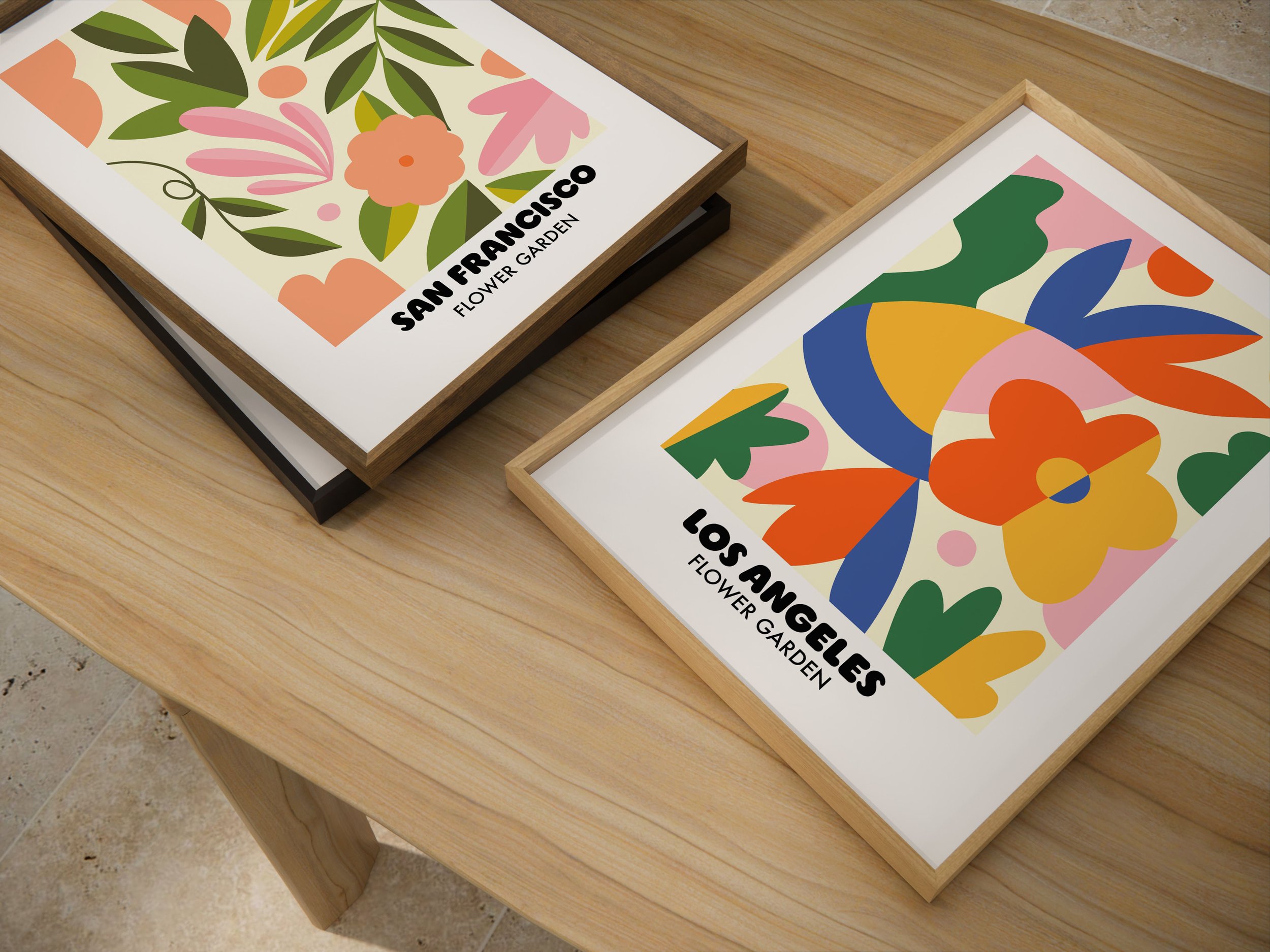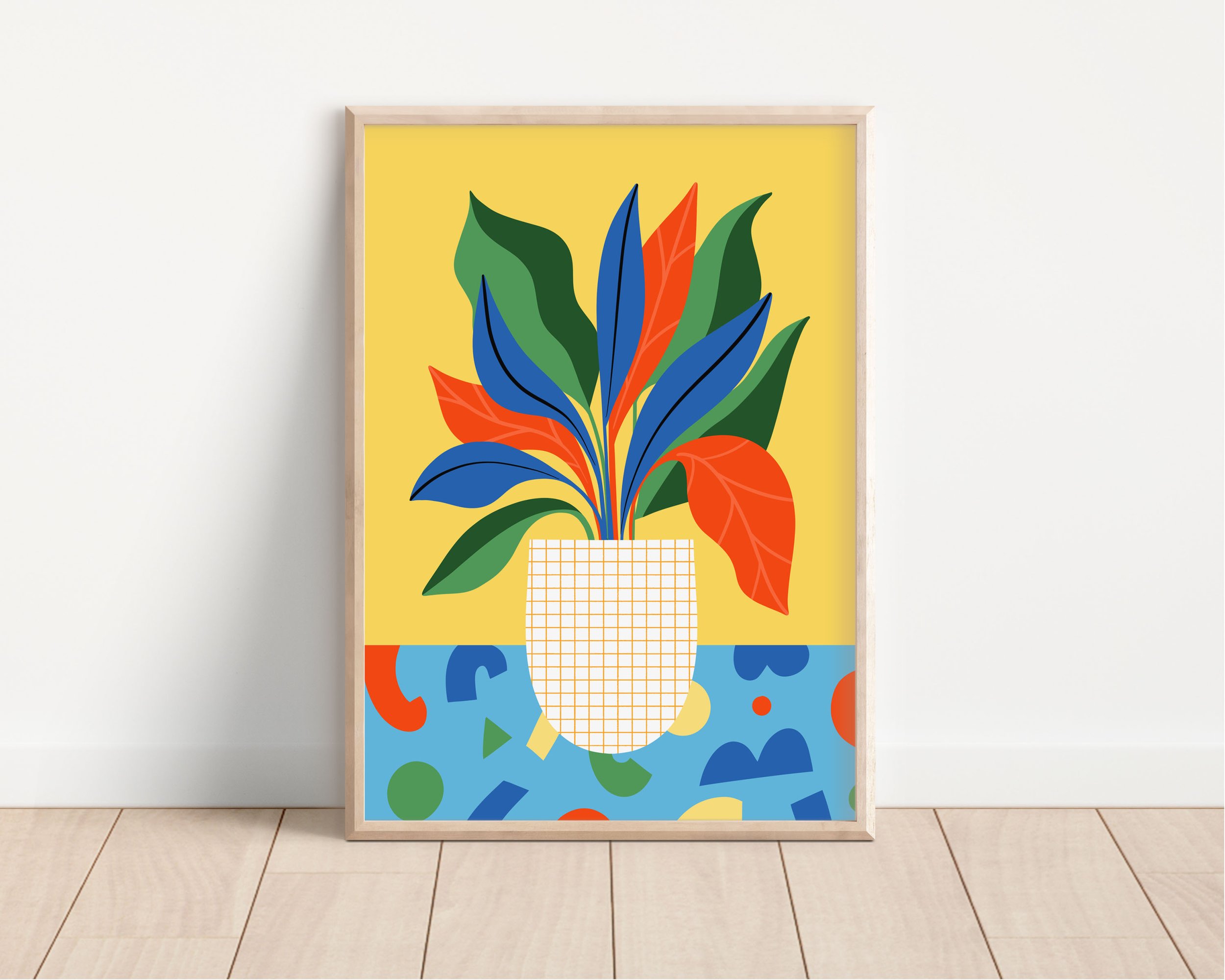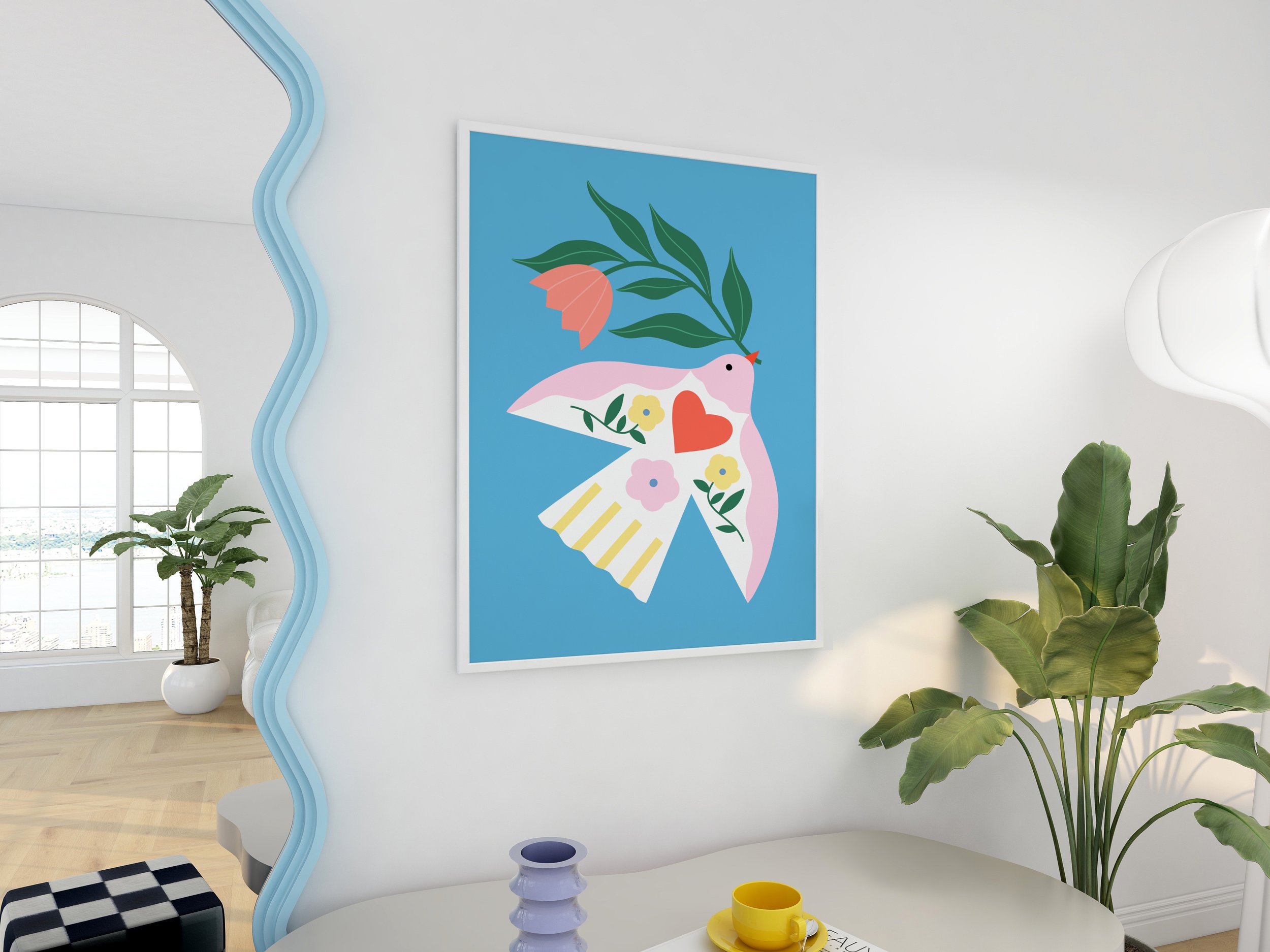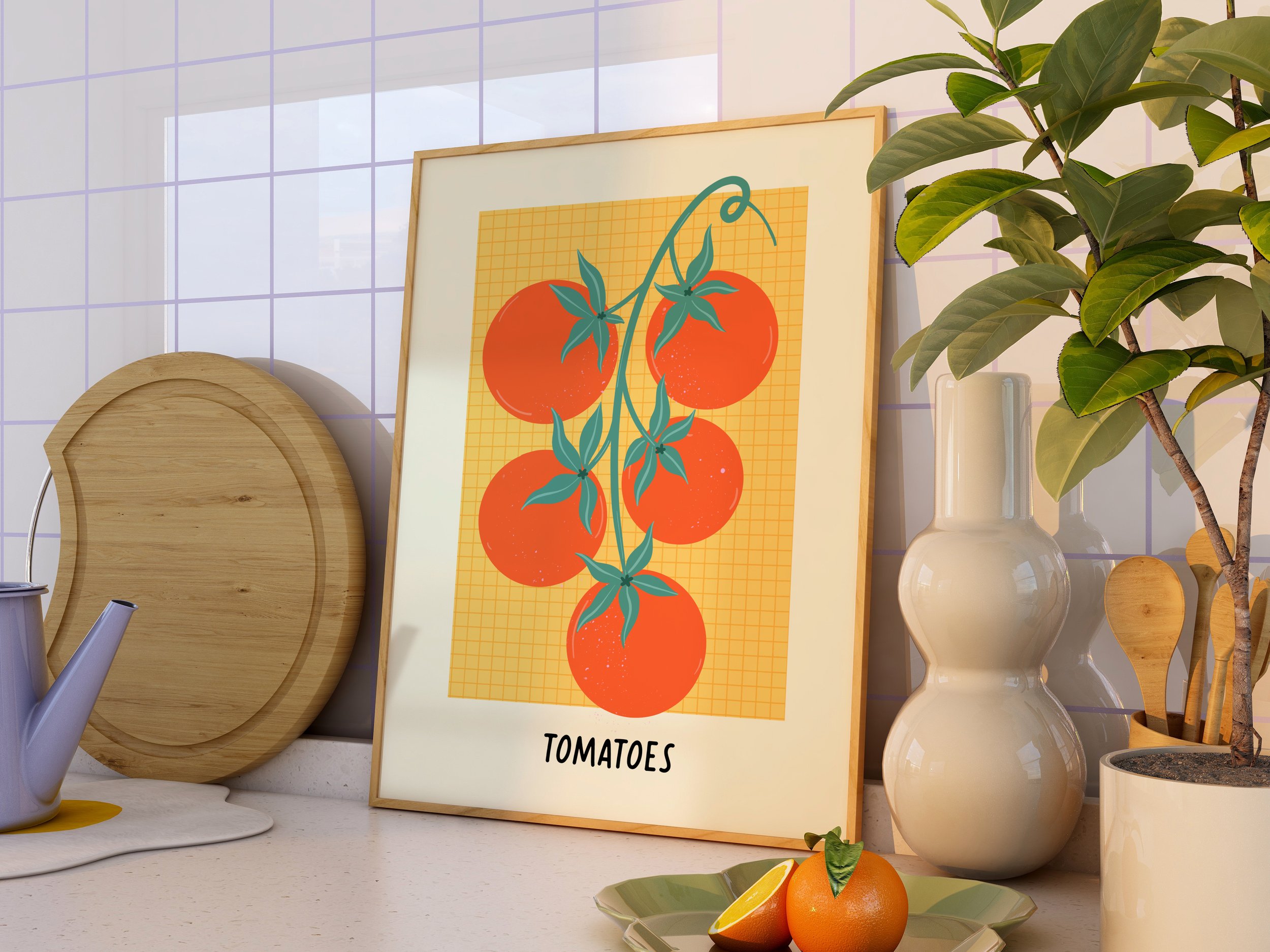Producing Art Prints
If there is one product I have sold that has helped to grow my business it is art prints. Relatively easy and largely inexpensive to produce in comparison to other products, art prints are a great product to stock and offer to your customers. They also can showcase your art to potential commissioners and clients so are a really good place to start. This blog post has the potential to be a huge topic so I will attempt to be as succinct as possible! I will be covering printing at home, some equipment and materials you will need and also whether outsourcing is an option for you.
There are many questions to ask yourself when deciding whether to print your work at home vs outsourcing. These include:
Do I have the necessary equipment to undertake home printing or if not, do I have a reasonable budget to invest in this?
Do I want to be in control of how much stock I hold and print on demand, so as to avoid wastage?
If I wholesale, can I realistically produce enough stock at home should a big order come in?
Do I want to be in control of the quality of my work and not rely on printing companies to be responsible for this?
A major consideration for myself was in relation to colour. My work is very vibrant and bright, and I have found that when converting my files to CMYK (the colour profile professional companies use to produce digital prints), many of the colours I favour looked dull and lacked intensity. Printing at home, on a regular inkjet printer, I can print in RGB, the result being closer to what I have designed, with no need for any conversion.
Is printing at home more affordable than outsourcing?
This depends on a number of factors, including how much you decide to spend on paper as the range of prices is huge (we will discuss paper types shortly). Also whether you choose a printer which is economical in regards to ink, as you will end up using a lot of this.
The unit price of an outsourced print will generally be lower than one you print at home. It is worth doing your costings carefully to check this. However, in order to reduce the cost of an outsourced print, you will need to order in bulk. Of course, the more you order, the cheaper the overall cost will be. Despite this, the main risk of outsourcing your art prints, and especially if you do need to buy in bulk, is knowing what will sell and whether you will be left with significant amounts of stock that you just can’t shift. Printing on demand at home mitigates this risk.
Once you have weighed up all these considerations you will be able to decide what is right for you and your particular set of circumstances.
To get started with printing at home you will require some essential equipment. It is worth considering your budget at this point, as this will greatly impact your choices, especially in terms of printers. There is a huge spectrum of pricing for printers, and it depends on whether you want to print A3 for example, if you need the printer to handle heavy paper for greetings card printing and also whether you want Giclee quality prints.
Below is a list of printers I recommend from low-end to high-end prices. I have not used all of these, since they are updated and upgraded so frequently, but the one I use currently is included (P.S - none are sponsored in any way, purely those I have come across during extensive research).
Canon Pixma TS9551C - All-in-one A3 Printer (this is the machine I use). Prints up to A3, borderless printing, 5 ink cartridges, scanner, wireless printing (doesn’t work with airprint, I run this printer off a PC laptop). Approx £200/250
Canon Image ProGraf Pro-300 A3 photo printer - Approx £650. Capable of printing museum quality Giclee Prints, pigment inks (10 cartridges)
Canon Pixma IP8750 - approx £200-300. The first machine I used and still one of the best in my opinion! Prints A3 borderless, works with airprint also which is a great bonus.
A note about Canon printers, what I love about them is they can largely handle heavy papers, and most quote up to 350gsm. I regularly use fine art paper of 310gsm weight and my printer seems to cope with it well. Although they aren’t the most economical in terms of ink usage, weight is a big factor for me. I have used an Epson EcoTank before as well. Incredibly good for budgeting on ink but not suited to heavier papers (I used 250gsm and that was really the heaviest it could cope with). However if you are only producing art prints and not greetings cards, an Epson could be a really good option. Here are some to consider:
EcoTank ET-18100 - approx £700
EcoTank ET -8550 - approx £750
EcoTank ET-8500 - approx £650
Yes, these machines have a higher base price than the Canon printers, but the saving on ink is really significant so definitely worth considering this when weighing things up.
Inkjet Papers
This section will consider paper choices, a huge topic so I will condense it into a few bullet points. For me, paper is the most important consideration and I strongly feel it makes the biggest difference to the overall quality of the print.
Choose a coated, textured paper for the most vibrant colours. The colours tend to pop more than on a smooth matte paper - Matte papers can produce crisp results but will appear flatter than a textured paper.
Silk or satin will produce the most vibrant results if you like this kind of finish.
Always order paper samples as there are so many options out there. Most good paper stores will supply these for free or you can order sample packs direct from them.
Fine art papers are of a superior quality to photo papers but can be unaffordable and also some tend to be on the heavier side so not suitable for all home printers. Ideally you want to be using a GSM between 220-300, either side of this can be too flimsy or too heavy. Again think about getting samples and see what weight you prefer.
Archival papers will have more longevity and are fade proof. When combined with pigment inks you will get a Giclee quality print (if this is something you want then make sure to check the specifications of the printer you have since most use dye-based inks, especially more budget models).
Although I have only touched on paper choices I do urge you to really research this aspect and try out as many as possible!
Thank you for reading. Please do comment with any further questions too :)




